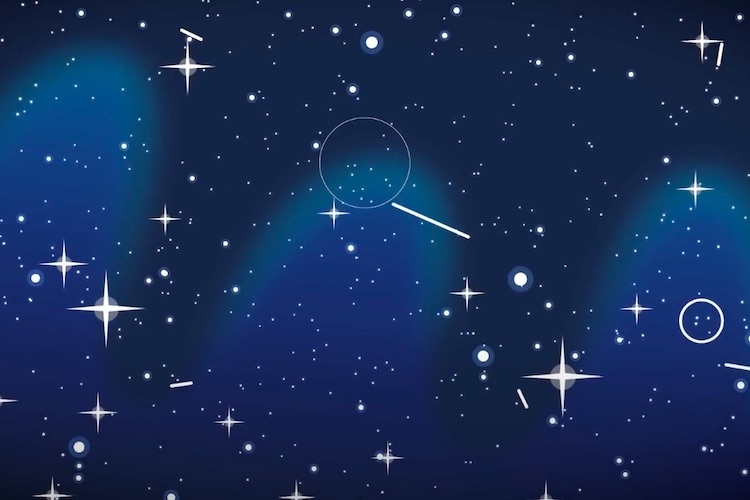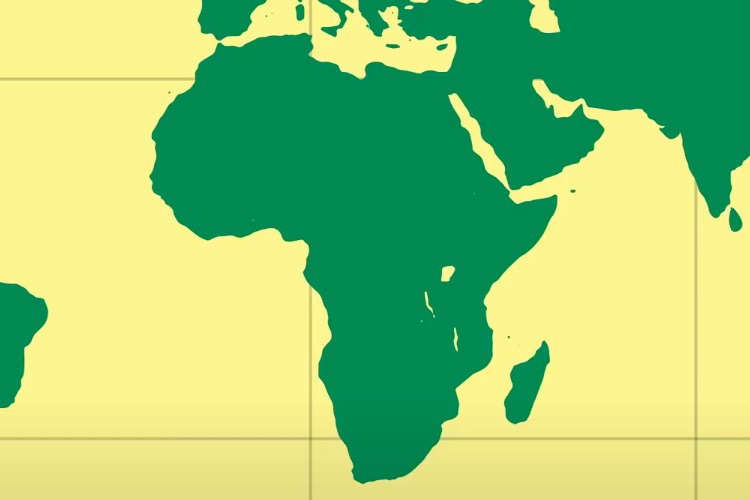Two-star clusters found in the Milky Way vertical border
Astronomers have found a cluster of stars which is controversial to the fact that clouds of star-forming material are rare and not expected to form stars
news | June 17, 2015

In February 2015 the Monthly Notices of the Royal Astronomical Society published an article titled “Discovery of two embedded clusters with WISE in the high Galactic latitude cloud HRK” about NASA’s Wide-field Infrared Survey Explorer, or WISE, discovery of two embedded clusters and molecular cloud HRK 81.4−77.8 currently forming stars. We have asked one of the authors of this research, Dr. Denilso Camargo from NASA/Jet Propulsion Laboratory, to comment on this work.
The Study
Star formation occurs inside massive and dense gas clumps in giant molecular clouds (GMCs) which are located mainly in the inner Milky Way disc. These structures may contain many cores that form stars. Some cores can group themselves forming groups of stars bound to each other by mutual gravitational attraction and known as star clusters. Most stars form in star clusters. Since these objects form in crowded environments in the early evolutionary stages of clouds, they are known as embedded clusters. Stellar clusters are fundamental tools to improve our understanding of the Galactic structure, star formation history, and evolution.

There are two possible explanations for the HRK 81.4-77.8 origin, Galactic disk fountain or an extragalactic cause. In the first, also known as Chimney model, violent events as supernovae explosions within the Galactic disc may throw dust away, which during the free fall phase can merge to form molecular/dust clouds. However, an extragalactic origin is also possible for the infall gas condensing to form clouds, which in turn fall to the Galactic disc. The extragalactic clouds, especially the High Velocity ones, may have in part origin in the tidal interaction between the Magellanic Clouds and the Galaxy. In the Chimney effect several hundred massive stars in the disc are necessary to have thrown HRK 81.4-77.8 up to the present position, in the sense that multiple generations of star formation are required to develop a sequential supernovae event generating a continuous superwind. Winds from OB stars may also contribute. Expanding superbubbles may trigger multiple star-forming episodes renewing the fuel source needed for its own expansion and ejecting dust up even more distant. After loss of the pressure support the dust may rain on the disc forming a Galactic fountain. We compute the possible orbital motion of the molecular cloud and its two embedded clusters. According to our results, HRK 81.4-77.8 and its clusters may be falling on a ballistic trajectory towards the Galactic disc. HRK 81.4-77.8 is clearly a key object for understanding the high latitude distribution of halo clouds.
Background
I am a Brazilian astrophysicist and currently I work on star clusters, especially embedded clusters that are objects in the earliest evolutionary stages. I work with Charles Bonatto and Eduardo Bica at the Universidade Federal do Rio Grande do Sul.
I spend the nights looking for new clusters in the WISE’s infrared sky maps. When I find out good candidates, I derive their parameters (age, distance and reddening) and send it to my collaborators, asking for another opinion. In a common night, I found two very faint objects. I sent the candidates for my colleagues and some time later (in the morning) I received an email from Bica telling me I had discovered something very important.
Future Direction
Recently we discovered 437 new star clusters, most of them are embedded clusters close to the Galactic plane mainly in the spiral arms. Since embedded clusters have not had enough time to move far from their birth places, we are using them to study the Galactic structure tracing the Milky Way’s spiral pattern.
However, the discovery of Camargo 438 and Camargo 439 change our understanding about our Galaxy, in the sense that star formation in our Galaxy is not restricted to the Galactic disc.
If you would like to contribute your own research, please contact us at [email protected]





























